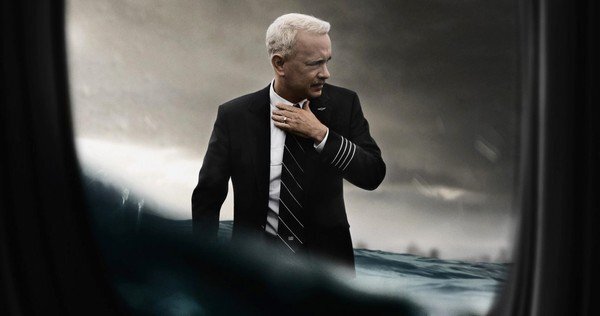The Sully Principle – Why People Matter
Image Courtesy: SULLY / cineville
Sully [2016] is a Clint Eastwood film starring Tom Hanks as, well, Sully. Based on a true story, it takes us through the protagonist’s struggle of proving how he acted in everyone’s best interests – where great results can always be suspected to be an eyewash. All incidents have a perspective, all sides always exist.
Why Processes
Organisations are built by people and they prevail through processes. The iconoclasts realise that certain repetitive tasks need to be delegated, and the quality standards need to be independent of individual competencies. This insight helps in creating a written manual of that particular process, which merges with another particular process and this helps assign these manuals to hired human resources who are supposed to work in tandem, and cooperate as a small part of the big machine.
“I do not like being in control of the process.”
The fascinating aspect here is to communicate to the process owners that what matters is not whether the process is being followed, but whether the outcome is as desired. It is natural for process owners (people who have been hired to manage that particular section) to focus on the process, and whether things are as per the rule book.
But they miss the fact that the process has been created by someone who isn’t running it right now, and it has been created to deliver results. If the results are not being achieved, the process needs to change. Processes cannot change without active feedback and a feeling of ownership – and that’s why A players ought to be hired.
When Processes Fail
It is natural to have an internal conflict and a possible blame game when things do not go as expected. Process owners are held accountable, though the situation might be beyond their control. If all parts of the machinery do not work together and something fails, blame lies on everyone’s inability to have preempted the problem.
“Engineers are not pilots. They were not there.”
Experts from one department are not the right people to understand why the issue occurred in another. There is a need to strike a dialogue with the relevant team, in a manner that empathises with what they went through. While it is convenient to replicate the same parameters for an outsider to ‘test the situation’, we have to take into account what the person faced at a psychological level – for that, more than anything else, impacted the consequent actions.
Role of a Perceptive Human
Management is a balance between the tangible and the intangible. Response to situations call for an immediate understanding of possible repercussions, weighing the stakeholders’ agenda and an intuitive understanding of the cause. Big Data offers a glimpse in how decisions could be influenced, but a human mind stands as a clear winner when things go down. An auto pilot switches off, and a captain holds the steering wheel.
“It was not a crash.
We knew what we were doing.
It was a forced water landing.”
The best decisions are based on intuition. The track record of a job candidate might look flawless, but if something does not “feel right”, the opportunity is not offered. In times of crisis, we fully rely on our judgement, and only refer to the data in the manual/machine.
Hiring the Right People
People are an essential part of any organisation, and their role goes beyond executing the tasks set by the process. People are employed to drive a process, create a feedback loop, and evolve the way they do things for good. Companies should be designed for this, as opposed to creating a set process for humans which is bound to break. Just like a human body has a new layer of cells refurbishing it, we need human inputs to refurbish a company on a constant basis.
“Remove you from the equation and the math fails.”
These practices build a precedent – for it sends a message that the company trusts its team to take spot decisions based on their experience and judgement – without having to look over their shoulders. While this helps companies tackle issues on the ground at lightening speed, it also boosts morale big time.
The management needs to learn how to look beyond the data and into the eyes of the people who work, with immense trust. The conversations need to be based on understanding the reason behind decisions, as opposed to asking for an explanation behind not following the rule book.
This trust helps you build a reputation of a good work place, and attracts A players. The company now expects everyone, across levels, to take ownership of their little compound. This sets into motion, the expulsion of B players, who are too stagnant for their own good.
The top 5%
Designing your company for A players means understanding that every job description has to look for the A player suited for it. A square peg does not and should be made to fit into a round hole. For a certain accounting position, leadership skills might not be the skills of a relevant A player.
The top 5% is subjective, and you locate that fit by prioritising parameters per job description. You will not look for skills fit for an operations manager, in a human resources professional. Once this puzzle is solved, hiring for the best skill becomes a breeze.
“I don’t feel like a hero. I’m just a man doing a job.”
You need people like Sully in your system. People who would stay calm when the engines fail, take complete control when failure seems imminent, communicate with brevity and are the last ones to leave a sinking ship.
You hire and retain people like Sully only with the right culture and mutual respect. The bottleneck, dearies, is always at the top.
—
Words: Sushrut Munje

